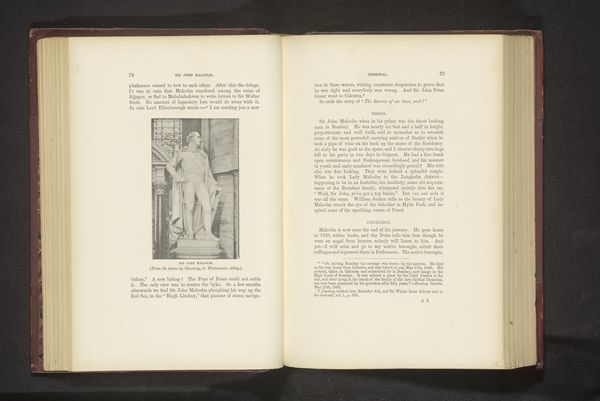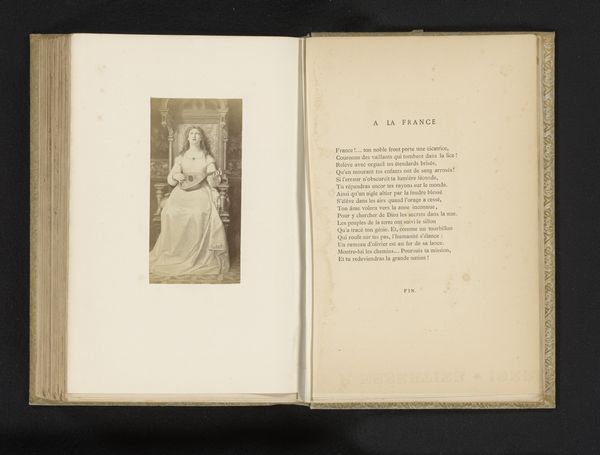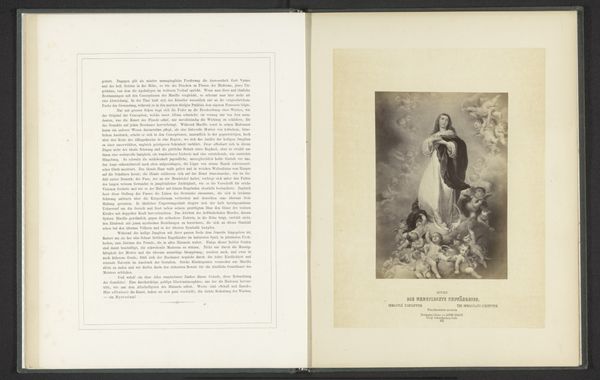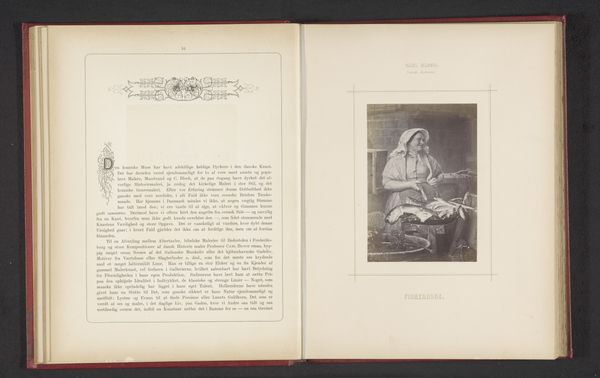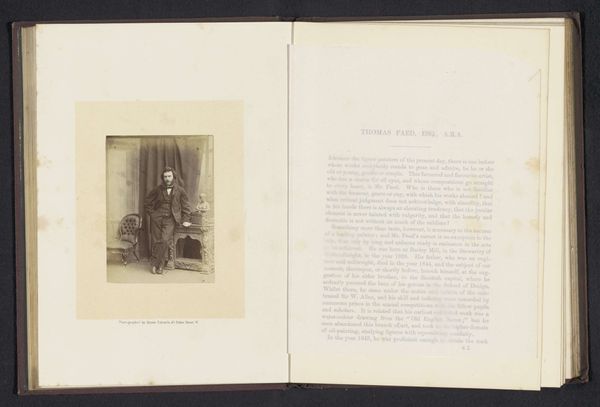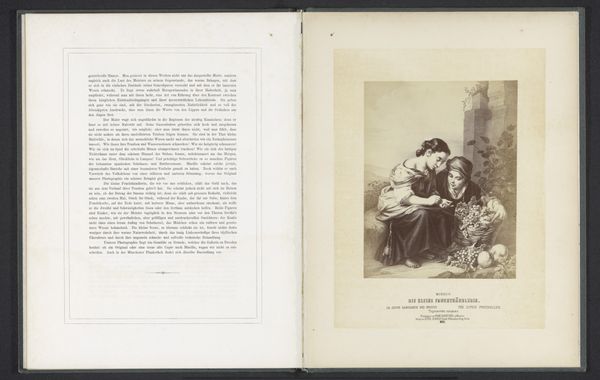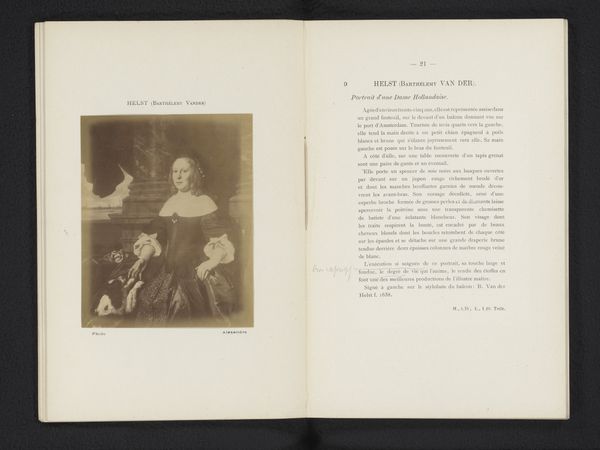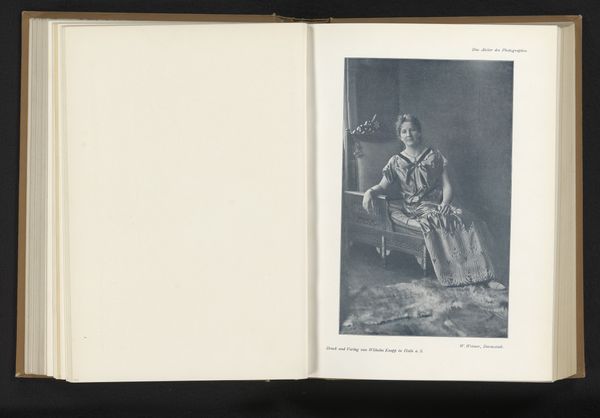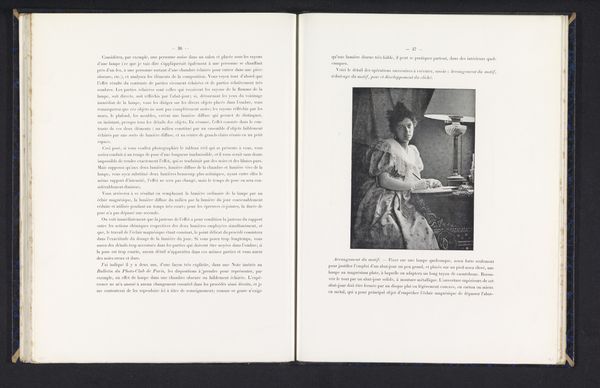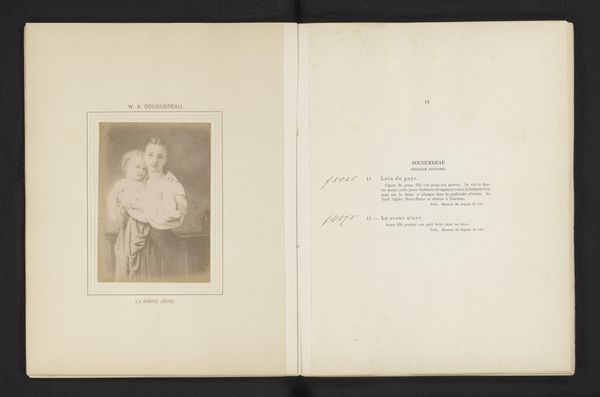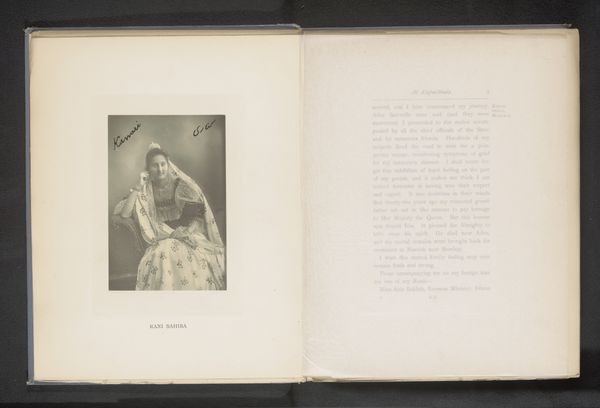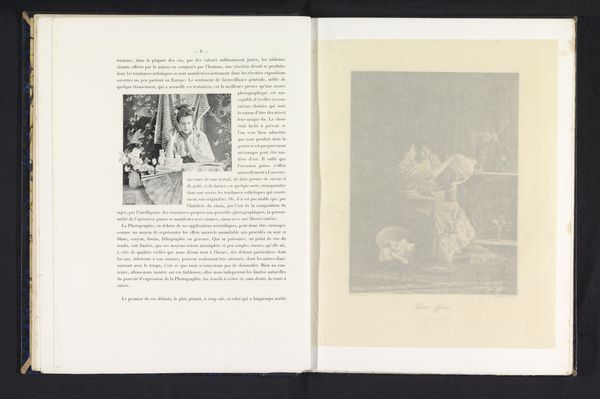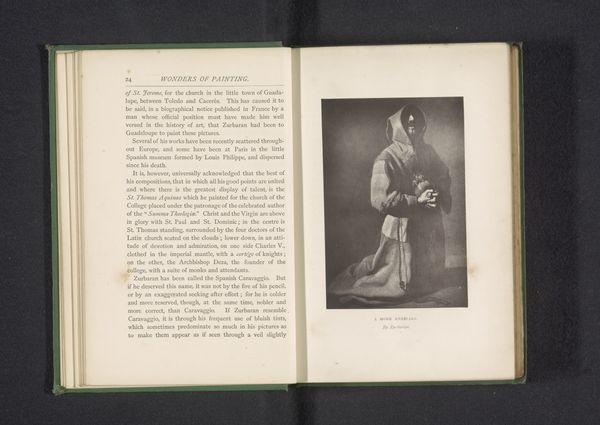
Fotoreproductie van een prent naar een schilderij van Maria met kind door Bartolomé Esteban Murillo before 1860
0:00
0:00
Dimensions: height 172 mm, width 116 mm
Copyright: Rijks Museum: Open Domain
Editor: Here we have a photographic reproduction of a print based on a painting of the Madonna and Child by Bartolomé Esteban Murillo, created before 1860. The subtle tones give the image a soft and gentle appearance. What do you see in this piece? Curator: The composition here relies heavily on a triangular structure. The Virgin and Child form a distinct pyramid, anchoring the visual field. Notice the limited tonal range—primarily greys and browns—which flattens the image, reducing any sense of depth. The lines of the drapery contribute greatly to the overall rhythmic movement. Do you observe how the light catches the fabric, creating a series of undulating curves that lead the eye? Editor: Yes, I see that now! So, it's less about what the image represents, and more about how those formal elements come together? Curator: Precisely. The interplay of line and tone creates a self-referential system. Ask yourself: how does the contrast between light and shadow sculpt the forms of the figures? How do the lines delineate space, and suggest movement? It is a carefully constructed arrangement of shapes and tones, creating a unified aesthetic experience. Editor: That’s a great point. I never considered how much the values contribute to the rhythm! Curator: Ultimately, examining these structural elements reveals a constructed reality. The aesthetic effect emerges not from an external truth, but from the internal logic of form and composition. Editor: I think that really enriches my understanding. Now I know to look for formal choices. Curator: Indeed, every mark and gesture contributes to the visual harmony and intellectual rigor.
Comments
No comments
Be the first to comment and join the conversation on the ultimate creative platform.
